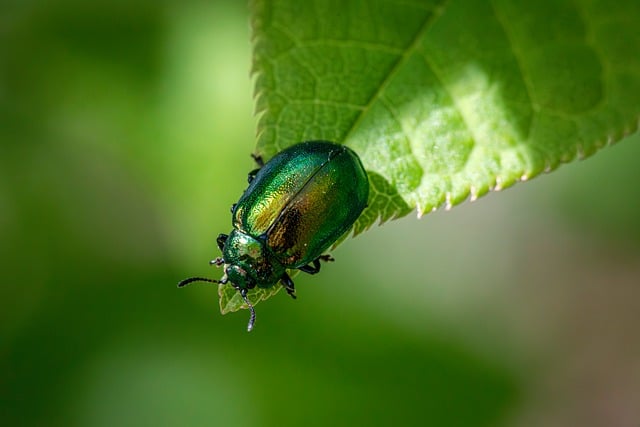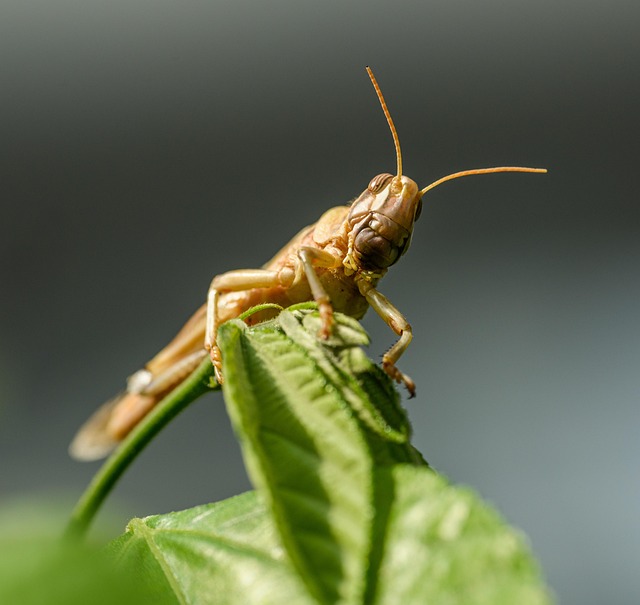Wildlife pest control manages human-animal interactions, focusing on maintaining balance between wildlife and occupied spaces like homes and businesses. Professionals identify common intruders like squirrels, raccoons, and birds, employing non-lethal methods such as humane trapping, habitat modification, scent deterrents, motion-activated lights, and strategic landscaping to prevent future intrusions. Adhering to local laws, including permit requirements and prohibited methods, ensures ethical and effective wildlife pest control while protecting both wildlife and human well-being.
Keeping your home or business free from unwelcome wildlife guests can be a challenging task. This comprehensive guide delves into the world of Wildlife Pest Control, equipping you with essential knowledge for effective management. From understanding basic concepts and identifying common pests to exploring non-toxic deterrents and professional services, we cover all aspects. Learn about prevention strategies and legal considerations to ensure a harmonious coexistence with nature while maintaining a safe living environment.
Understanding Wildlife Pest Control: The Basics

Wildlife pest control is a specialized field that focuses on managing and mitigating interactions between wild animals and human structures, primarily homes and businesses. It involves understanding the behaviors, habitats, and needs of various wildlife species to implement safe and effective strategies for their control or prevention. The primary goal is to maintain a harmonious balance while ensuring the well-being of both the animals and the occupants of these spaces.
This process begins with identification—knowing which species are causing issues and why they’ve entered human habitats. Common pests include squirrels, raccoons, rodents, and birds, each requiring unique approaches for humane trapping, exclusion, or deterrence. Professional wildlife control experts use a combination of non-lethal methods, such as habitat modification and noise deterrents, alongside licensed traps and safe removal techniques to address these intrusions effectively.
Common Wildlife Pests and Their Behavior

Wildlife pest control is a critical service for both homes and businesses, as it addresses common intruders that can pose significant risks. Some of the most frequent wildlife pests include squirrels, raccoons, opossums, and birds like starlings and pigeons. These animals are drawn to human habitats due to the availability of food, water, and shelter. For instance, squirrels are attracted to tree nuts, seeds, and fruits found in gardens and parks, while raccoons seek out trash cans and pet food left outdoors.
Each wildlife pest exhibits unique behaviors that impact their interaction with humans. Squirrels, for example, are known for their agility and tendency to build nests in trees, attics, or wall cavities, causing damage to structures. Raccoons, being versatile climbers, often enter buildings through chimneys, vents, or broken fixtures, leading to potential property damage and health hazards due to their association with diseases. Understanding these behaviors is crucial when implementing effective wildlife pest control measures tailored to each specific intruder.
Non-Toxic Methods for Wildlife Deterrence

When it comes to wildlife control, many homeowners and business owners prefer non-toxic methods as a safer alternative to traditional pest control chemicals. These methods focus on deterring wildlife from entering or remaining in specific areas using natural repellents and behavioral modifications. One popular approach is using scent-based deterrents like coyote pee or fox urine, which can be applied around the property to signal to animals that they are not welcome. Visual deterrents, such as reflective objects, motion-activated lights, and scarecrows, can also be effective in scaring away wildlife without causing them harm.
Another eco-friendly strategy involves making physical changes to the environment. This includes sealing entry points like gaps in walls or roofs with steel wool or concrete, installing guard rails on rooftops, and securing trash cans with tight-fitting lids. Plants known for their strong scents or thorny foliage can also serve as natural barriers against wildlife. By employing these non-toxic methods, individuals can humanely manage wildlife interactions while maintaining a harmonious relationship with the environment.
Professional Wildlife Removal Services

Preventing Future Wildlife Intrusions

Preventing future wildlife intrusions is a key aspect of effective wildlife control for homes and businesses. Implementing robust wildlife pest control measures can significantly reduce the likelihood of unwanted animal visitors. This includes sealing off entry points such as gaps in walls, roofs, and foundations with appropriate materials like steel wool or concrete. Regular inspections should be conducted to identify and address any potential access points before they are exploited by pests.
Additionally, maintaining a clean and clutter-free environment around the property can deter wildlife from seeking shelter or food sources. Secure trash cans with tight-fitting lids and remove any sources of water stagnation, as these can attract insects and other critters. Landscaping should be carefully planned to create natural barriers that discourage wildlife from approaching buildings, while also incorporating elements that support native wildlife habitats away from residential areas.
Legal Considerations and Regulations

When addressing wildlife control for homes and businesses, understanding legal considerations and regulations is paramount. Different regions have distinct rules and laws governing the handling and removal of wild animals, especially when they become pests in urban areas. Violating these guidelines can lead to significant fines and legal repercussions. Thus, it’s crucial to consult local authorities or wildlife management agencies before taking any action.
Property owners and business managers must be aware that some species may be protected under federal or state laws, requiring specialized permits for their handling. Additionally, certain methods of wildlife pest control are prohibited due to concerns over animal welfare and environmental impact. Staying informed about these regulations ensures compliance, effective management, and the humane treatment of affected wildlife.
